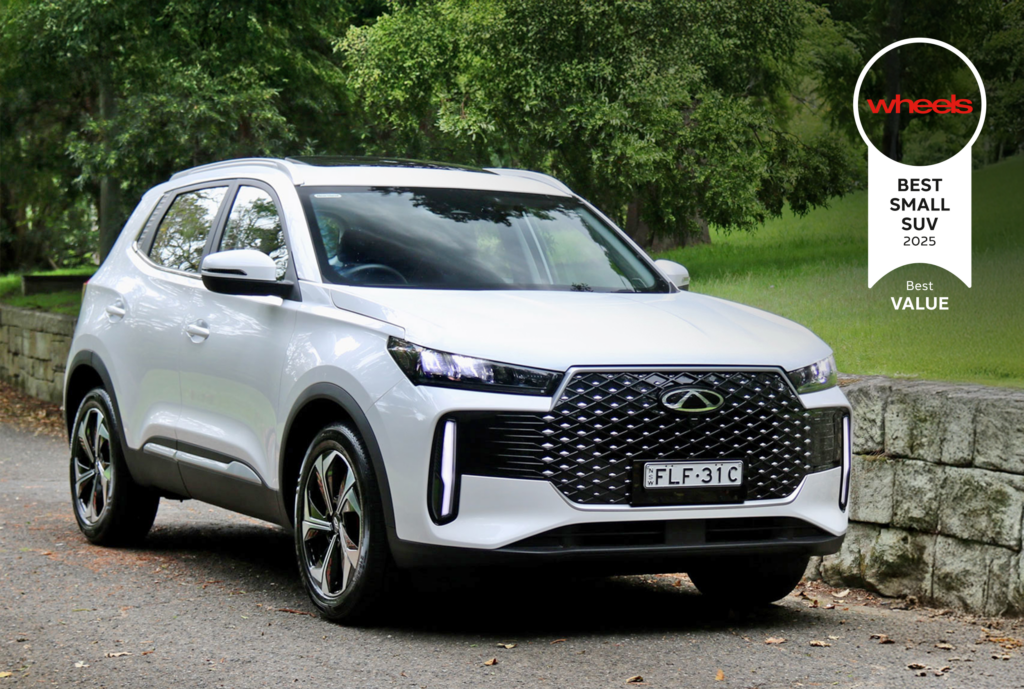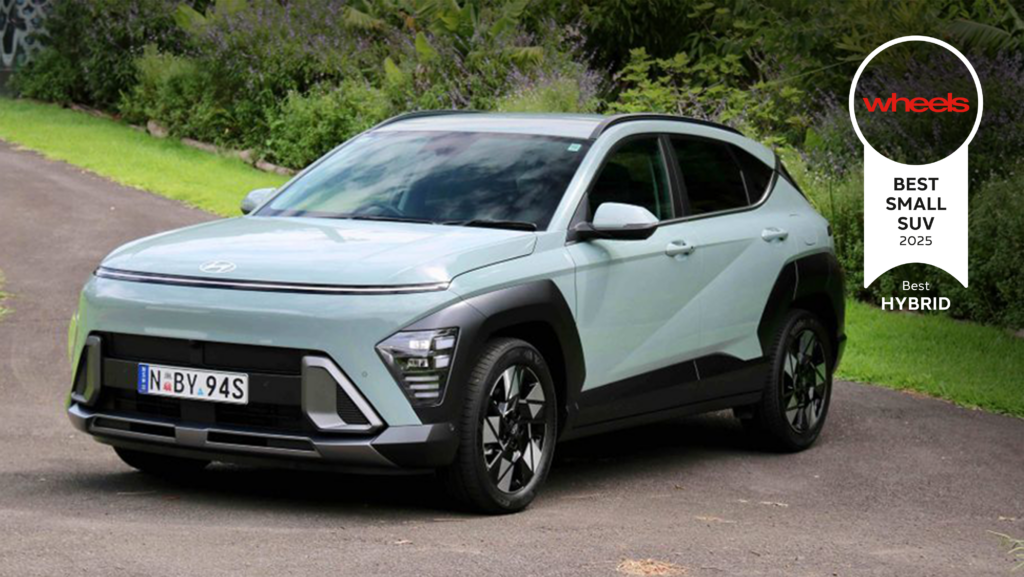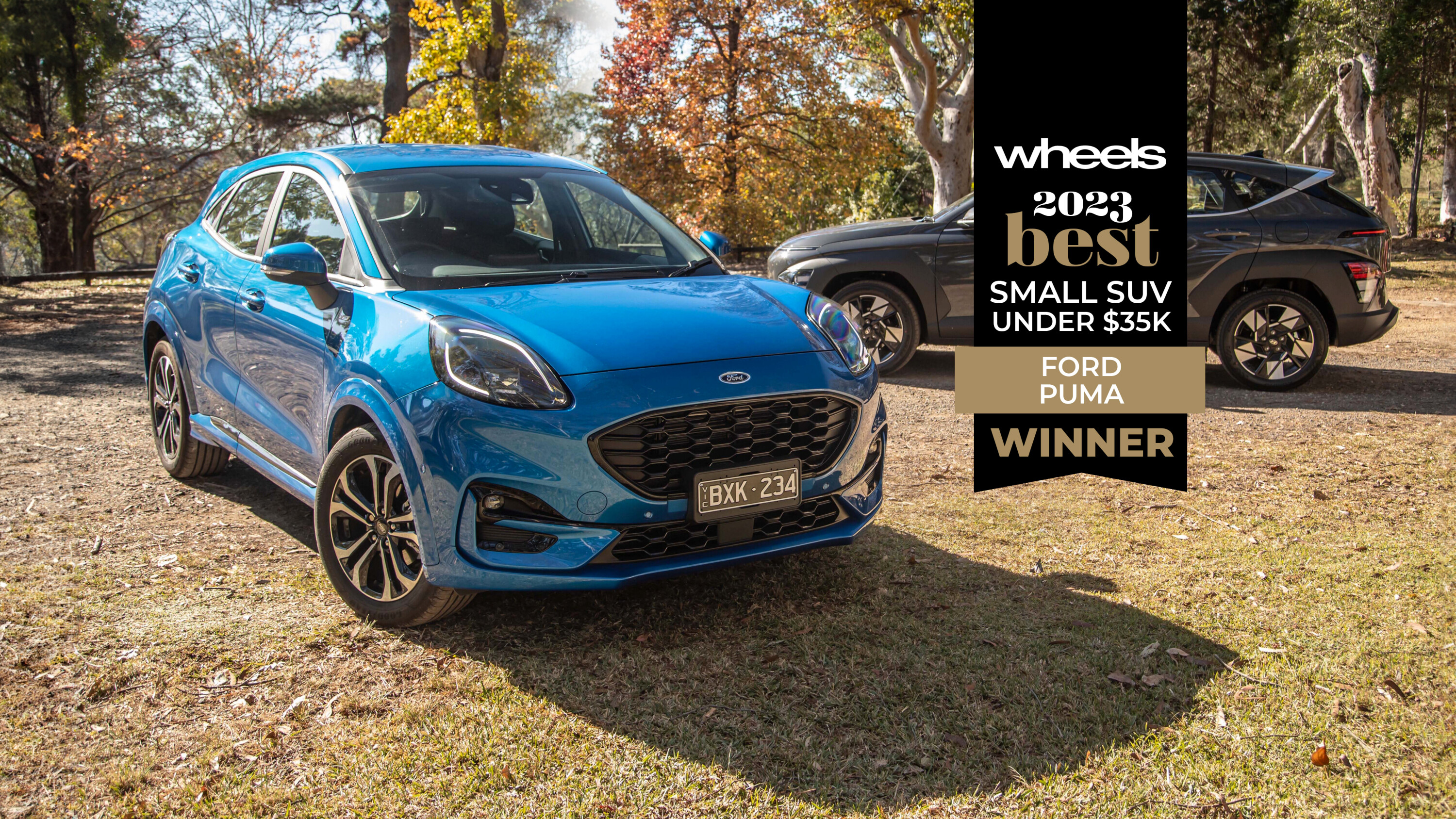
The Ford Puma and previous Hyundai Kona exemplified the occasional oddity of the Federal Chamber of Automobile Industries’ vehicle classifications.
Split by just two millimetres despite the Ford being based on the Fiesta city car and the Kona on the i30 hatchback, the 4205mm Puma was labelled a ‘Light’ SUV while the 4207mm Kona was classed as a ‘Small’ SUV.
The Kona has put on a major growth spurt for its second generation, stretching an extra 150mm over a platform now shared with the sedan version of the i30 (as well as the Kia Niro).

Even the Puma remains a small SUV in our book, though, and the comparison is even more pertinent when you consider pricing overlaps.
Take our range-sweetspot, mid-spec Puma ST-Line we have here that costs from $33,190 before on-road costs, matching up with a base Kona that has stepped up to $32,000 from its previous $26,990 starting point.
The Puma offers more convenience features, including factory navigation, voice control, auto-dim rear-view mirror, LED ambient interior lighting, auto wipers and one-touch windows front and rear (just front in the Kona). It also has a much larger digital instrument cluster, though the Ford’s standard-features victory isn’t conclusive.
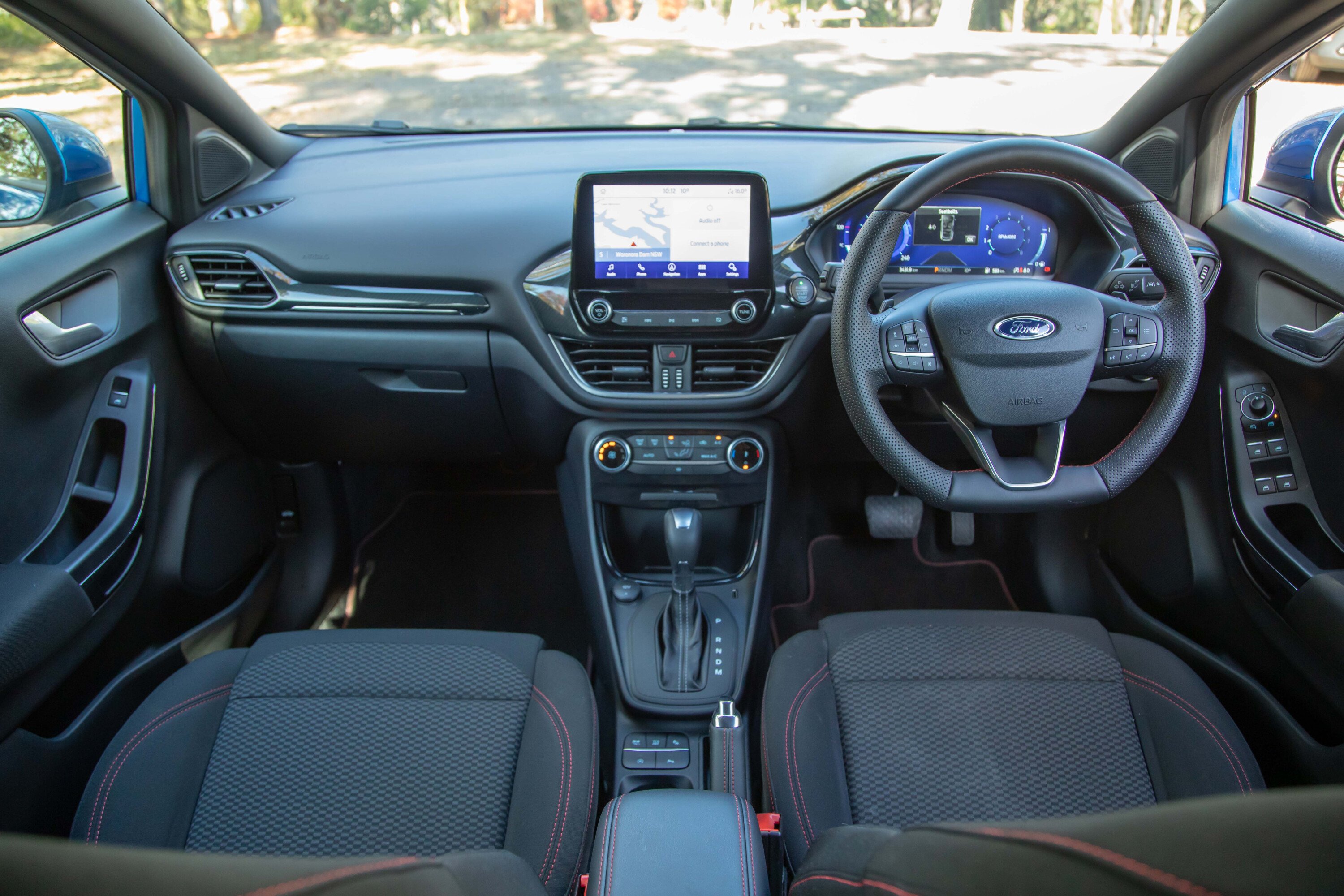
In return, the Kona has a 50 percent larger infotainment touchscreen, dual-zone climate versus the Ford’s single zone, and wears 18-inch alloy wheels rather than 17s.
Hyundai has also equipped the Kona with an impressive list of inclusive active safety, which includes features such as forward-collision warning system with direct oncoming traffic and junction turning functions, safe exit (to help prevent the opening of doors into oncoming traffic), and lead-vehicle take-off alert.
Ford asks Puma buyers an extra $990 for a Park Pack that adds adaptive cruise, blind-spot and rear cross-traffic monitoring, and front sensors that are all standard on the base Kona.
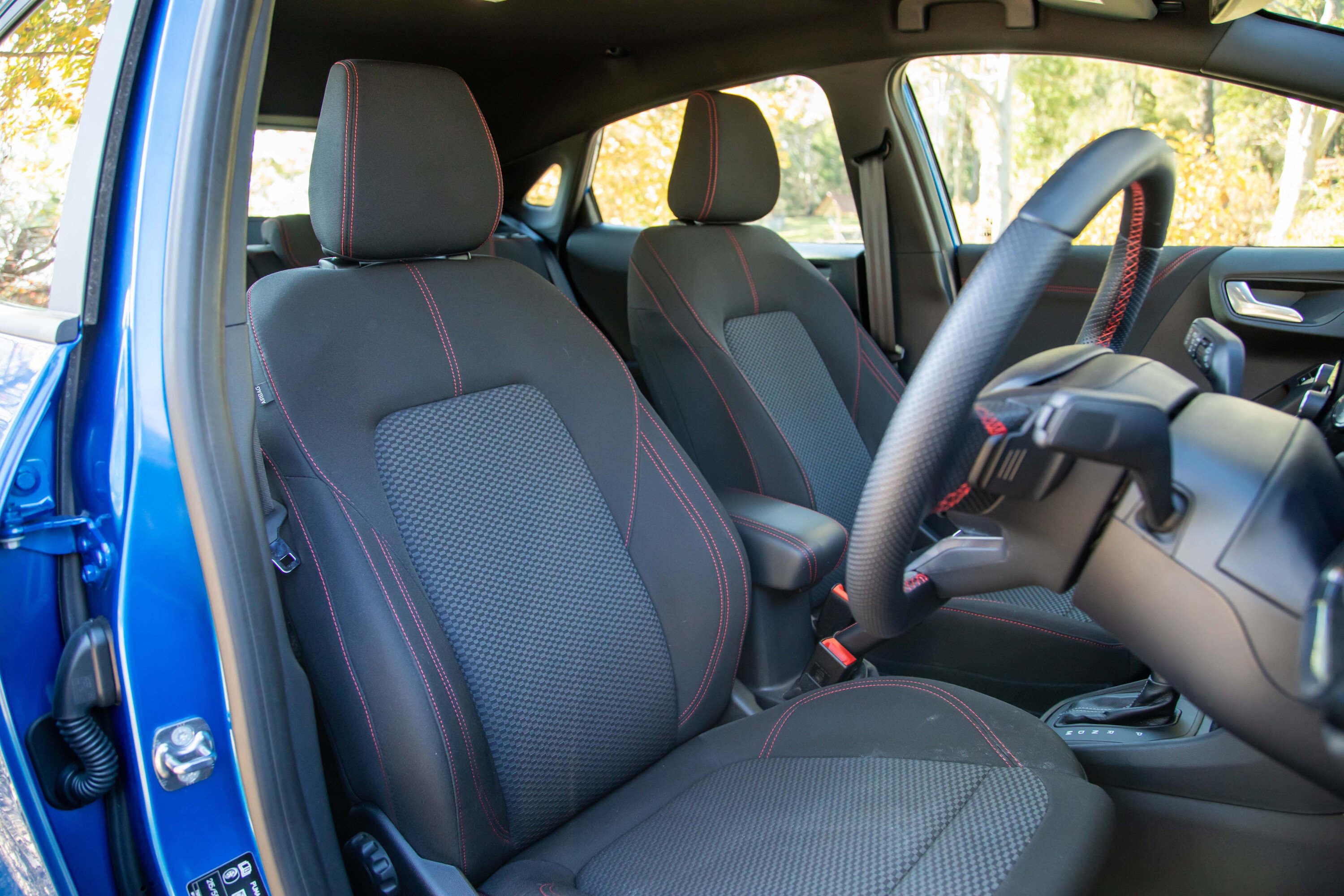
Dual panels – the upper panel an active, drag-reduction flap – even hint at the grille-less face of an electric car.
Hyundai says the Kona EV was the first variant to be designed, and that revelation is borne out by the futuristic slim, full-width daytime running LED strip and matching rear LED bar found even on the petrol version. Dual panels – the upper panel an active, drag-reduction flap – even hint at the grille-less face of an electric car.
Inside, the Kona’s new fit-out borrows from the company’s Ioniq 5 with its curved panel of dual displays and pinboard, plus lower-dash module for heating/ventilation controls and various infotainment short-cut buttons.
The 12.3-inch horizontal infotainment touchscreen is matched by a same-size digital driver display if you tick the N-Line option pack or step up to the Kona Premium.
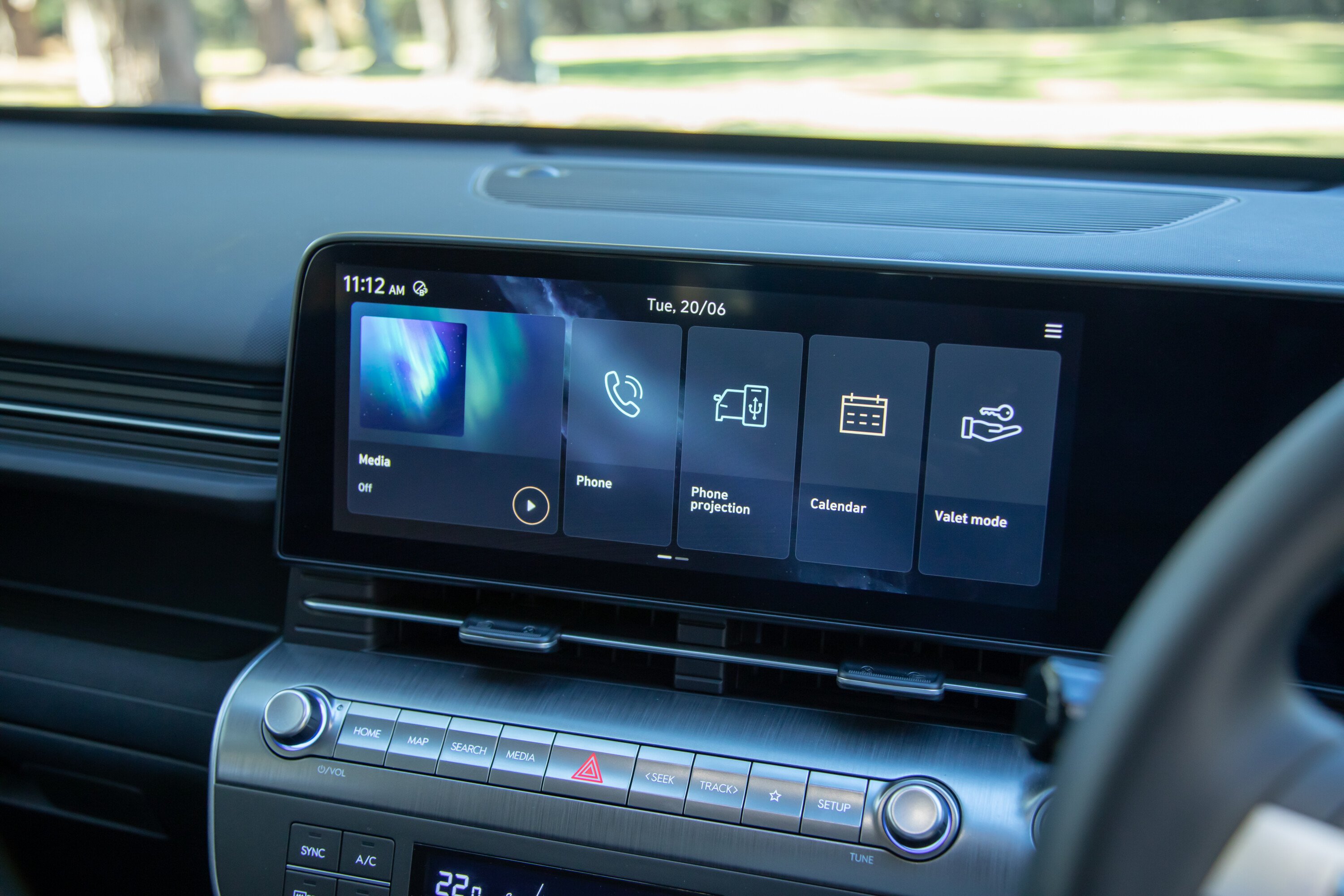
The base Kona’s relatively basic instrument cluster accedes to the Puma’s 12.3-inch driver panel, which is superior graphically if limited in customisation options.
A clever application of textured surfaces by Hyundai’s interior designers overcomes the extensive use of hard plastics to lift perceived quality, while the Kona interior impresses most with its abundant space and useful practicality.
The centre console comprises an open-access storage area with removeable top tray, wide phone tray with inductive charging, and an S-shaped middle section that provides clever, flexible storage for drinks and phones.
Ford’s smallest SUV isn’t quite as generous for storage space, and the same can be said for room in the rear seat. Where knee room is cramped for adults in the Puma, the Kona delivers class-leading space after gaining nearly 8cm over the previous-generation model – helped largely by a 6cm stretch to the wheelbase.
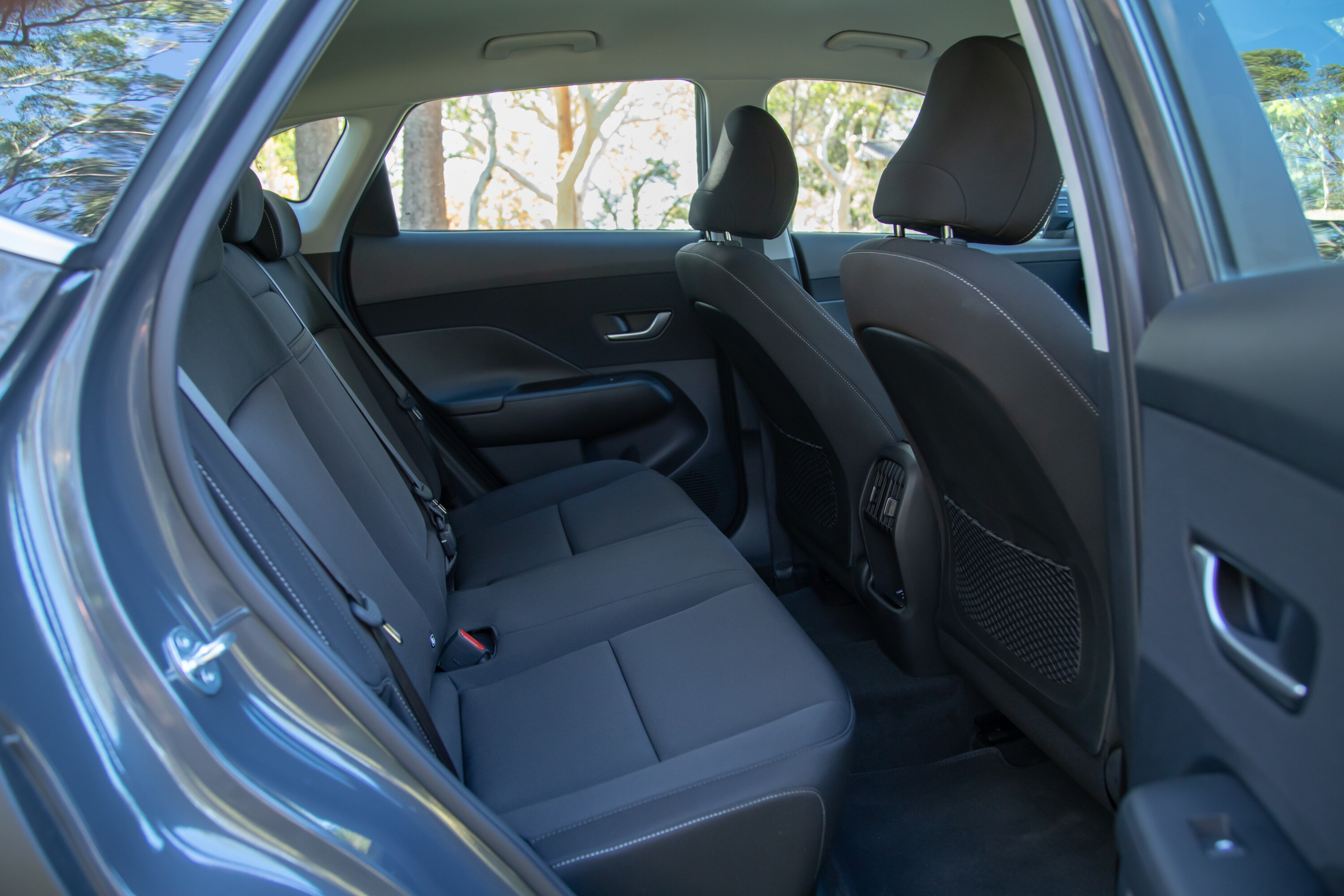
There’s also extra shoulder width that would allow three adults to squeeze across the rear bench that is firmly cushioned but provides excellent under-thigh support.
The Puma still works as a small family SUV, especially as it offers one of the most versatile boots in the segment through its variable-height floor and underfloor storage tub.
Boot volume in the Kona is only fractionally behind the Puma’s 410 litres to address the luggage-compartment weakness of the previous model. As with the Ford, there’s a cargo blind and the rear seats fold 60.40.
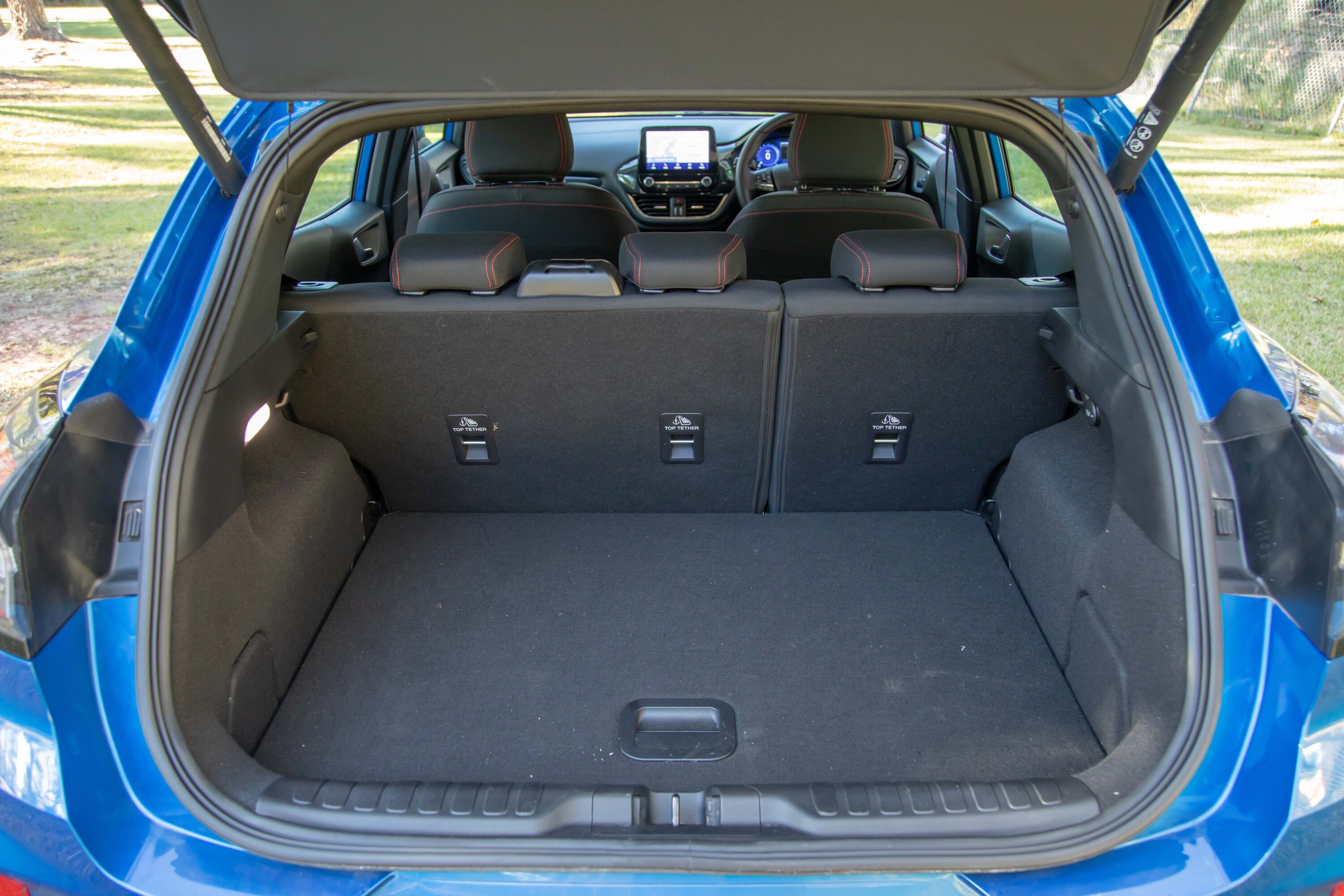
An auto tailgate is only $750 on the Puma where for the Kona it’s available only on higher-spec models.
Torsion-beam rear suspensions sit under both models, though this is most obvious in the Kona where there’s a comparative lack of sophistication. Although the Kona rides with a greater suppleness than the firmly sprung Puma, the Hyundai’s suspension feels like it’s working overtime across the patchier surfaces thrown up by urban and suburban roads where the Ford’s damping continuously excels.
It’s no coincidence, as with the previous-generation Kona, that the rear-multilinked Kona Premium is better at dealing with variable surfaces.
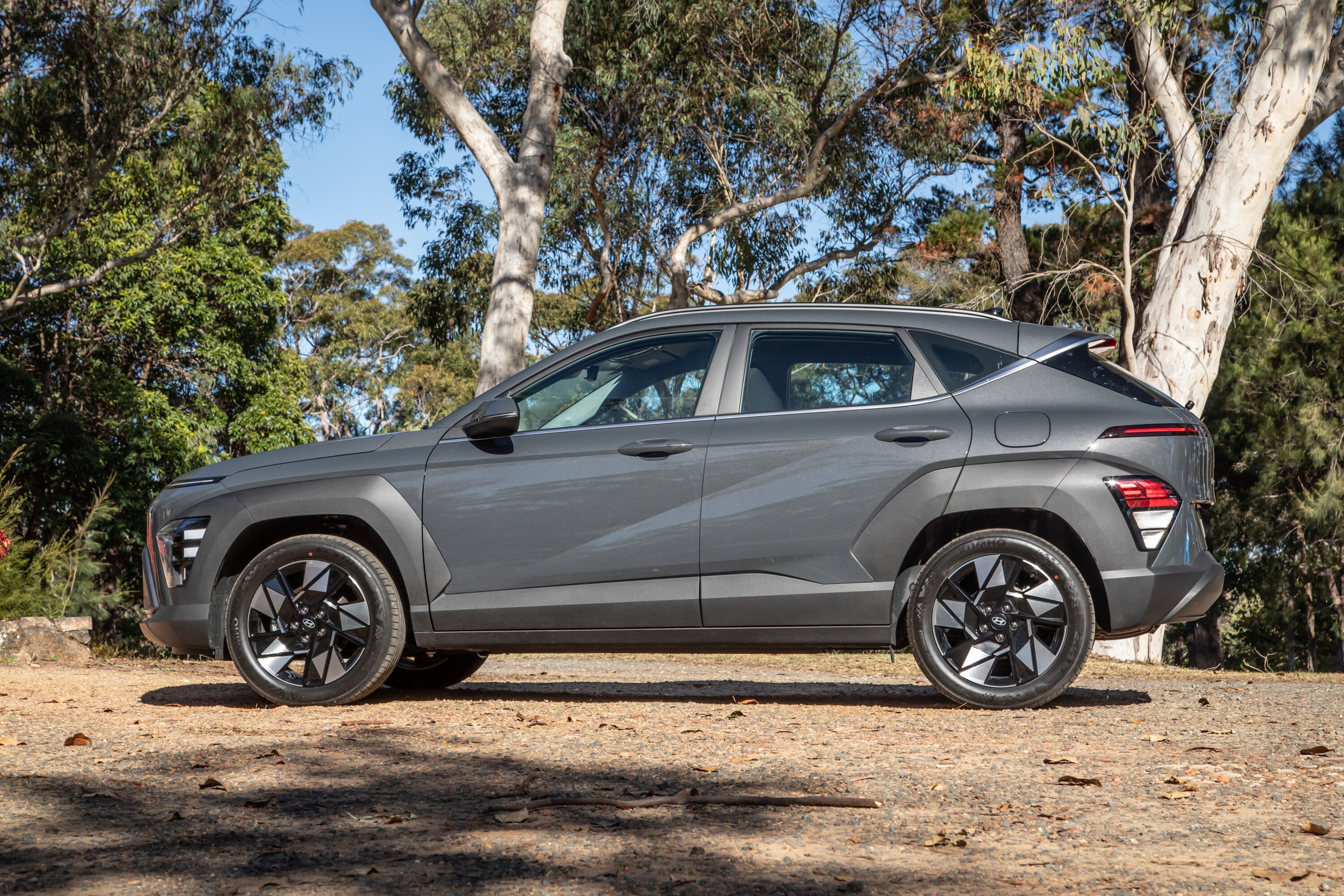
The Puma also remains quite the revelation on country roads, its chassis taking on corners with enthusiastic agility to make the Ford stand out as a rare, bona-fide driver’s car in its class.
The Kona’s steering is less convincing in both its weighting and on-centre precision, while the Hyundai’s lane-keeping aid needs to be turned off to avoid unnecessarily intrusive nudges of the wheel.
This can be done conveniently on the steering wheel, though it defaults to On every time you start the car. It’s a repeat for the annoying Speed Limit warning that chimes in even if you creep ever so slightly over a prevailing limit.
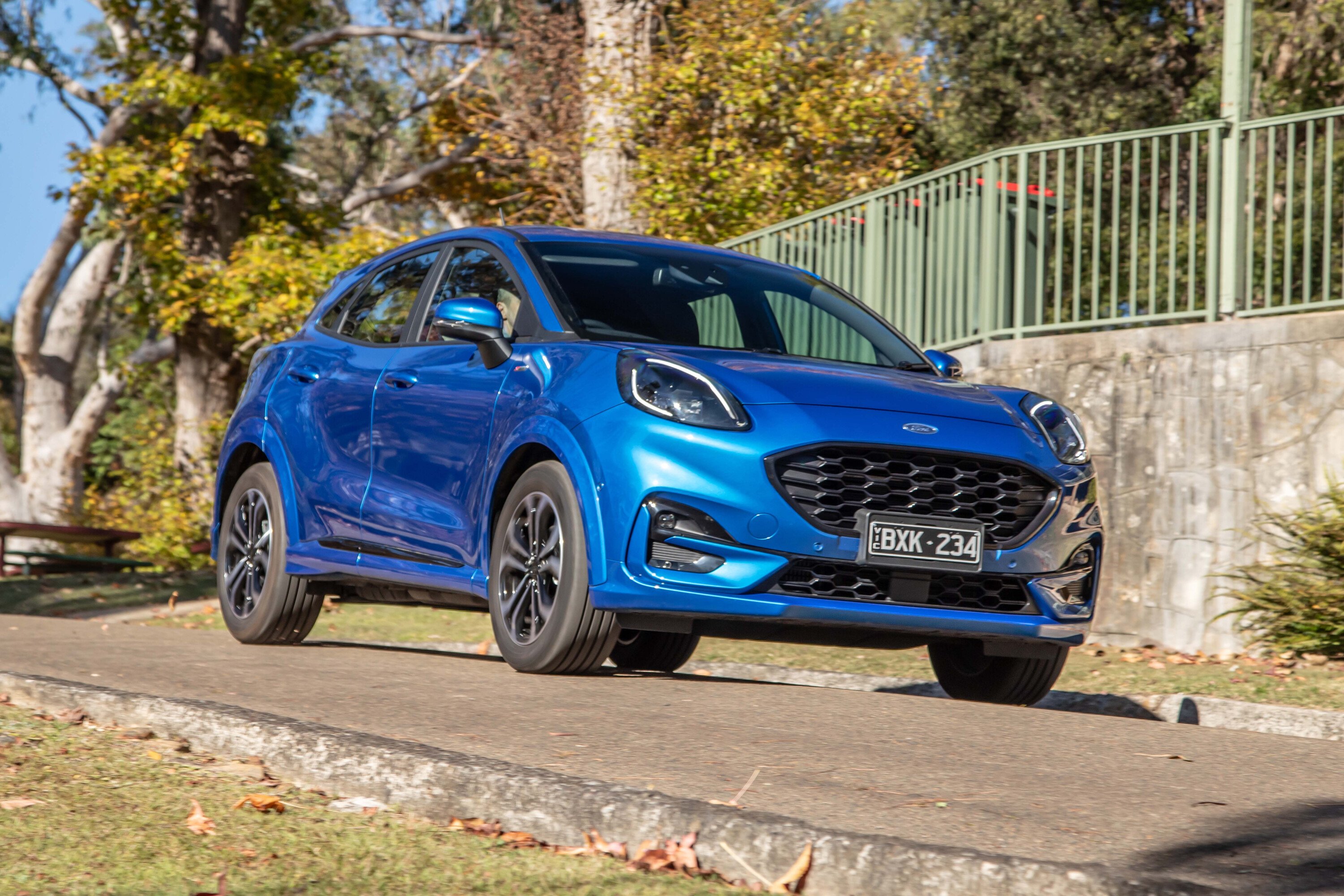
Getting up to speed is a somewhat sluggish process in the base Kona, which carries over a normally aspirated 2.0-litre four-cylinder and CVT auto that was never a firecracker but must now contend with shifting a slightly heavier vehicle.
While it will be more than serviceable for some owners, spending above $30,000 in this segment starts to access some good engines – including a variety of three-cylinder turbos that are exemplified by the one found in the Puma.
Ford’s teeny 1.0L may have modest outputs of 92kW and 170Nm – less than the 110kW/180Nm of the Kona – but this is a highly willing and characterful engine. Its torque is spread across 1400 to 4500rpm where the Kona only peaks at the latter figure, making the Puma more responsive.
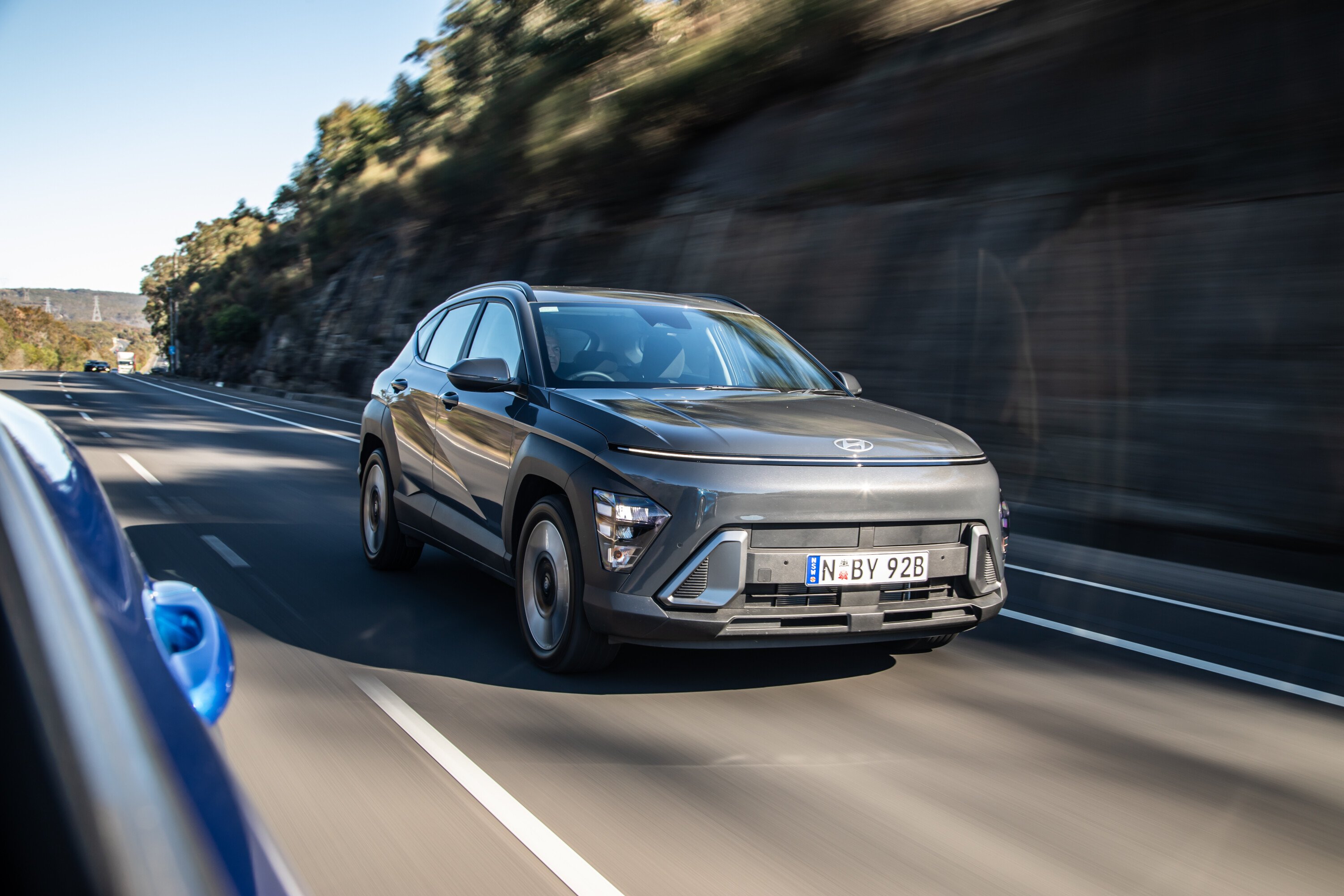
Paddle shifters also give the driver manual access to gearchanges – and a surprisingly sporty engine note when revs are allowed to climb.
The Puma’s smaller engine is also more economical, according to official consumption figures, though unlike the Kona it requires premium unleaded.
Count that as another factor, along with a larger cabin, larger active-safety arsenal and slightly lower price tag, that arguably makes the Hyundai Kona the sensible choice here.
The Puma isn’t without its pragmatisms, however, while it offers more convenience features than its rival here. But the Ford stands out predominantly for the way it’s engineered for relentlessly enjoyable driving.
SCORING
| Ford Puma ST-Line | Hyundai Kona | |
|---|---|---|
| Overall | 8.0/10 | 7.5/10 |
2023 Best Small SUV series
Looking to get into a brand-new small SUV? Our stories below will guide you to the model that best suits your needs!
We recommend
-
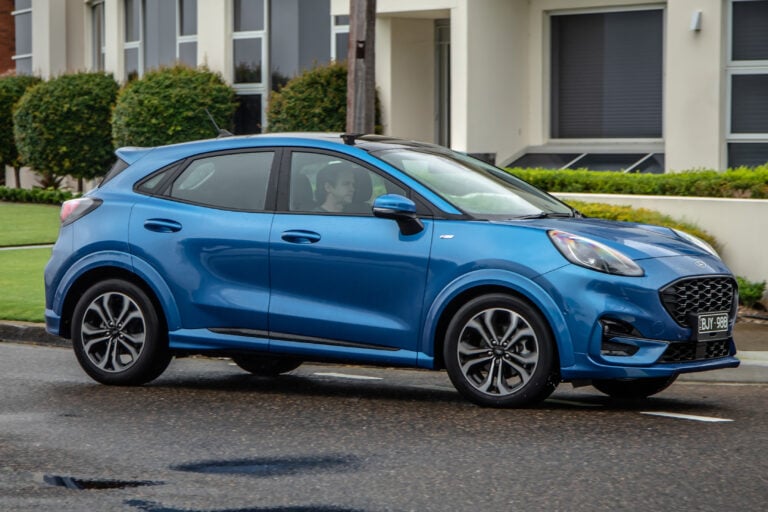 Reviews
Reviews2022 Ford Puma ST-Line Review
Ford’s compact SUV is best bought in mid-spec ST-Line, with a great price tag, heaps of tech and tons of room.
-
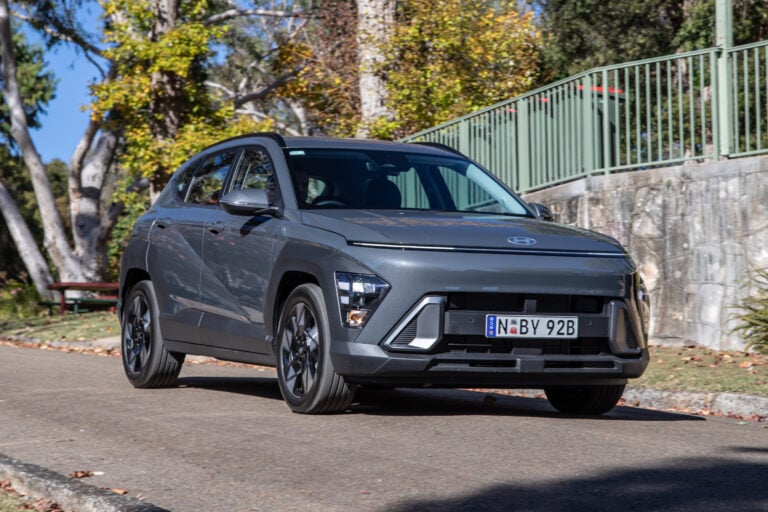 Reviews
Reviews2024 Hyundai Kona review (entry model)
Hyundai’s small SUV isn’t so small anymore, and neither is the price – so what do you get when spending the least possible on a new one?
-
 News
NewsNew car calendar 2026: All the new cars coming to Australia next year
Here’s the WhichCar by Wheels guide to all the new cars that will launch in Australia in 2026. Check back in regularly for updates...


